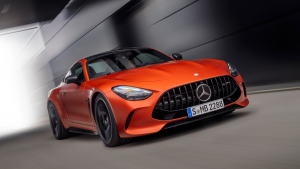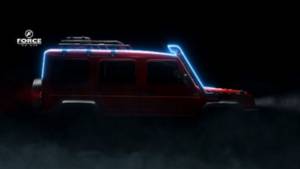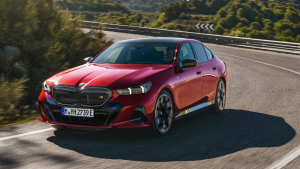Whats special about the DSG gearbox on the Polo GT TSI
The Volkswagen Polo GT TSI is the german carmaker's most advanced hatchback in India yet. Now, we've already told you about the technology that governs its engine - TSI (you can read about it here) but it also has one of the most advanced gearboxes - a dual clutch automatic DSG - among hatchbacks in the country. Here's a low down on what makes the DSG so special.
What is a DSG?
DSG stands for Direkt-Schalt-Getriebe or direct shift gearbox. One can essentially treat it as two manual gearboxes working alternatively but packed inside one housing and therefore it uses two clutches and two gear shafts (one for each 'box, so to speak) to deliver power to the wheels. If broken down to the basics, there are five major components to this gearbox - two clutches, two gear shafts and finally an electronic control unit or ECU that controls the gear shifts by analysing throttle position, engine load conditions and road speed among others.
The clutches are mounted concentric to each other and so are the two gear shafts. Now, unlike a regular gearbox which carries all the gears on one shaft, the DSG has the even numbered gears 2nd , 4th and 6th - on the first shaft (with a dedicated clutch), and the remaining - 1st, 3rd, 5th and now 7th as well as the reverse gear on the second, again with a dedicated clutch.
How does it function?
Now, when the driver puts the car into D, the first clutch selects the reverse gear while the other selects the second gear and engages just short of the bite point. This is because when starting from standstill, the ECU doesn't know if the driver is trying to park or if he will drive away. A sensible compromise is to preselect the second gear and reverse gear. In case there is a need for aggressive acceleration, the driver just has to give more gas and the ECU instantly tells the first clutch to drop the reverse gear and pick up and engage first.
In normal driving conditions, when the ECU senses that throttle input is constant and that the car is accelerating steadily, the next higher gear is preselected and when the shift point arrives, one clutch disengages and the other engages. This happens within 8 milliseconds making it one of the fastest gearboxes.
When the ECU senses that the driver has lifted off the throttle, the inactive clutch preselects the next lower gear and down shifts as soon as the shift point arrives. The dual clutch transmission has many names around the world. Some call it DCT while some even call it the PDK but the underlying operating principle of all such gearboxes remains the same.
What are its advantages?
One of the most obvious advantages, of course, is speed of shifting. For a regular gearbox, the clutch has to disengage from one gear then move to the next gear and then engage. In comparison, in a dual clutch gearbox, when the first clutch is engaged with one gear, the second clutch has already preselected the next gear and is primed to engage making the transition between gears instant. This also means that torque will not drop significantly in between gearshifts aiding smoother and more seamless acceleration. A DSG also helps in significant increasing the efficiency compared to a conventional torque convertor unit courtesy minimal slippage.
Are there any disadvantages to it?
The biggest disadvantage is that dual clutch gearboxes are more expensive. Also, there's no part repair or part replacement of parts for such a 'box. A DSG is a sealed unit and if there's a problem with the 'box, the complete unit needs to be replaced. And, if it happens out of warranty, it can literally beak the bank; more so for hatchback owners who are on a budget in any case. These are also heavier than conventional gearboxes. Another small disadvantage is that in unexpected situations that the ECU is not able to anticipate, the gearshifts can take longer than usual. This is because when the ECU is expecting the car to be accelerating constantly, it pr-selects the next higher gear. So, in case you need to downshift to overtake, the second clutch will have to disengage from the preselected gear and select the next lower gear.
What cars have featured such gearboxes in India before the Volkswagen Polo GT TSI?
So far only the high-end cars have had DSG boxes. Indian manufactured cars that use twin-clutch boxes include the Skoda Laura, the Skoda Superb, the Volkswagen Jetta, the Volkswagen Passat and the Ford Fiesta. The latter was the cheapest car to feature a dual clutch 'box before the arrival of the Polo GT TSI. Read more about the Polo GT TSI here.
Starts Rs 6.17 Lakhs
999cc
Automatic
76
175
16.47 Kmpl
Starts Rs 31.99 Lakhs
1984cc
Automatic
190
320
15.10 Kmpl
Starts Rs 14.78 Lakhs
1390cc
Manual
122
200
14.69 Kmpl
Starts Rs 30.2 Lakhs
1968cc
Automatic
177
350
17.42 Kmpl
Related Stories
Top Stories
Latest Videos
Most Popular
- Budget Sportbike Showdown: Kawasaki Ninja 500 vs Aprilia RS 457 vs Yamaha YZF-R3
- 2014 Triumph Daytona 675 vs 2024 Kawasaki ZX6R - A Decade of Evolution in Supersport Motorcycles
- Mumbai-Pune Expressway speed restrictions updated
- Nissan Magnite EZ-Shift review - is the AMT any good?
- Nitin Gadkari states that tax on Hybrids should be reduced to 12 percent in the coming future












